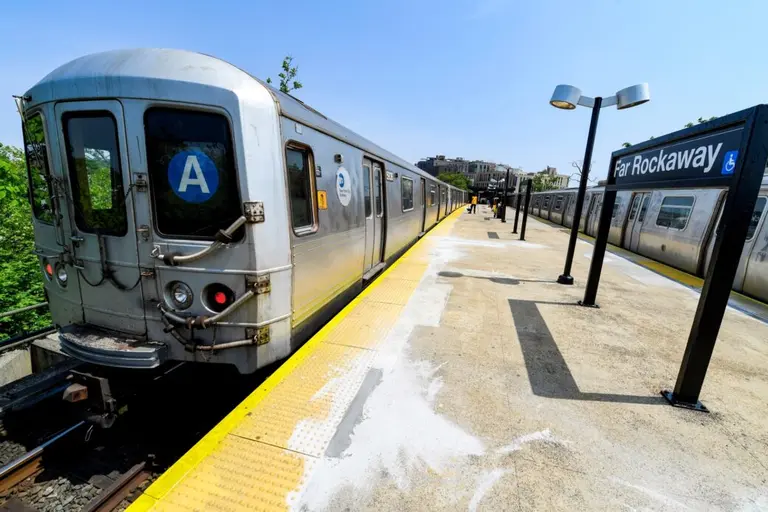MTA board approves first transit reorganization plan in 50+ years

Image via Flickr cc
On Wednesday the 17-member MTA board approved a transformational reorganization plan–the agency’s first in its 51 years in existence–that follows a report by Alix Partners, a consulting firm hired to financially streamline and outline what MTA chairman Pat Foye called “likely to be the biggest capital plan in MTA history.” The report recommends means and methods for improving service, ending cost overruns and project delays and reducing waste and duplication, building on the Subway Action Plan, which, according to the MTA, has been successful so far.
In an effort to focus on a core foundation of safety, day-to-day operations and maintenance, The MTA–the country’s largest transit authority with an $18 billion budget–including the Long Island Rail Road, will consolidate back-office operations and merge more than 40 groups into six departments. The agency will also hire new high-level positions to oversee the recommended changes. The report also noted that the agency needs to update union contract details and civil service requirements, stating that “rigidity of Civil Service laws limits the ability of the MTA to attract, retain, develop and manage talent in the current job market.”
The same consulting firm was hired under a separate contract to help with the implementation of biometric-enabled time clocks to help the MTA control overtime abuses and to help standardize time and attendance procedures, also assigned a deadline.
With the vote came targeted deadlines and milestones for major priorities. Filling identified new executive positions, among the first deadlines outlined in the plan, is scheduled to happen this fall. By October 15, the MTA will also complete a detailed Reorganization Implementation Plan. Thirty critical new management staff will be brought on board by December 1.
According to the report, “The core strategy behind [the] MTA’s transformation is to centralize and simplify the organization with the goal that transit service and system expansion can be greatly improved at a lower total cost. To do this requires fundamentally changing the MTA’s legacy structure into an organization that is more nimble, efficient and cost-effective.”
Key recommendations include:
- MTA should refocus agencies on service delivery, core safety, operations and maintenance activities, and centralize all support functions.
- MTA should centralize all capital-related functions across MTA into a new central group responsible for planning, development, and delivery of a Capital Program that improves service, the customer experience and accountability.
- MTA should create a new central engineering function reporting to a new Chief Engineering Officer to set standards, ensure quality and sustainability of infrastructure.
- MTA should create a new central customer communication function to provide high quality and consistent customer engagement led by communications specialists.
- MTA should centralize all operating support functions (i.e., operating standards, maintainence, repair, and service design) focusing agencies on service delivery.
- MTA should centralize all human resource functions to reduce redundancies (such as differing organizational structures and too many layers across agencies) and drive clearer lines of accountability.
New leadership roles and capabilities include the following:
- MTA should appoint a Chief Operating Officer reporting to the Managing Director, and the Managing Director will report to the Board as well as the CEO.
- MTA should appoint a Chief Transformation Officer reporting directly to the Board, as required by state law.
- The MTA should appoint an MTA Accessibility Officer reporting directly to the Chief Executive Officer. While the MTA believes it has made progress in increasing accessibility to Subways, Buses, LIRR and Metro-North in recent years, much more remains to be done to make the transit system accessible to all customers.
Although, as 6sqft previously reported, an MTA spokesman said layoffs would only be a “last resort” for the reorganization plan, and the report didn’t mention whether it would result in layoffs, the agency stated that the recommendations could result in the potential reduction of 1,900 to 2,700 positions, and that the final number would depend upon further analysis and the agency’s ability to incorporate new methods into everyday operations.
In 2017, Governor Andrew M. Cuomo declared a state of emergency and directed the MTA to hire consultants to analyze problems and suggest solutions. The resulting Subway Action Plan (SAP) provided $836 million in funding. The initial funding of the Subway Action Plan is ending; The MTA’s new challenge became maintaining the progress gained in the Subway Action Plan without funding outside the Capital Plan cycle. To do this, it saw the need to fundamentally transform into a cost effective, high-performance agency. To that end, the New York State Legislature passed legislation this year that tasked the MTA with developing a personnel and reorganization plan by June 30, 2019, with board approval to come by July 30, 2019.
MTA Chairman and CEO Patrick J. Foye said in a statement, “Now that the Board has approved these recommendations, the work of transforming the MTA into a world-class organization that provides its customers with the service they deserve begins. It’s a new day at the MTA, our customers have demanded change, and we’re going to deliver it for the first time in nearly 50 years.”
RELATED:
- New consulting firm report suggests the MTA cut costs by merging 40 groups into six departments
- Cuomo declares a ‘state of emergency’ for the NYC subway, gives MTA $1B for repairs
- Yearlong event series explores the future of New York City’s transportation infrastructure
- Judge rules accessibility lawsuit against the MTA can move forward



























